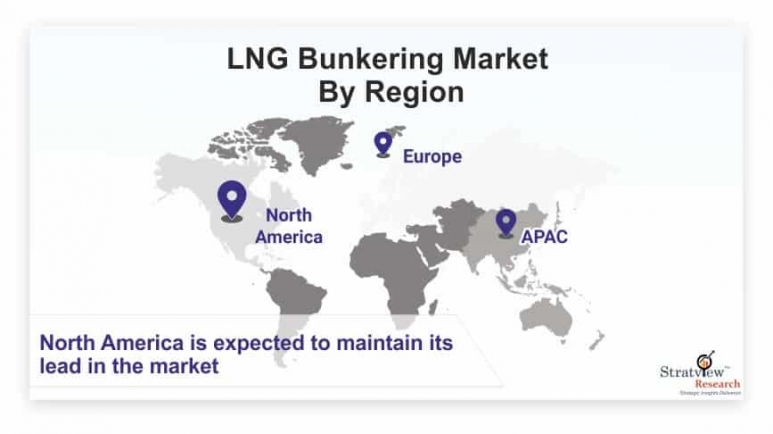LNG Bunkering Market: Global Outlook, Key Developments, And Market Share Analysis | 2021-26

AUG 27,2021/IndustryNewsGlobal/ The unexpected shifts in the global markets because of the sudden outbreak of the COVID-19 virus have brought many major and minor tremors to industries of all sizes including the LNG Bunkering Market.
LNG Bunkering Market is likely to grow at an impressive CAGR of 46% during the forecast period. Revolutionary trends towards clean energy combined with strict government regulations to reduce airborne emissions including sulfur and nitrous oxide will lead the LNG bunkering market during the forecast period. Furthermore, technological advancements in vessel design to cut down maintenance, enhance fuel efficiency and improve performance, reliability and safety are some of the key parameters likely to push the product demand.
Bunkering, a process to refuel marine vessels, is carried out through pipelines connected to a terminal or direct transfer from trucks or ships. Effortless transportation and storage of liquefied natural gas makes its feasible for adoption. Converting natural gas into liquid state at -1610 Celsius is beneficial for easy transport and shipping. Higher heating value along with lower density results in the reduction of emissions of harmful greenhouse gas.
By Product Type
Based on the product type, the market is segmented as truck-to-ship, port-to-ship, ship-to-ship, and portable tanks. The ship-to-ship LNG bunkering market is expected to observe expansion over 60% by 2024, owing to its quick transfer operations and high capacity. Capacity to allow the movement of cargo and bunkering operation to occur simultaneously, which will further glorify the industry landscape during the forecast period. On the other hand, availability of pipeline on ports along with larger hose to elevate the bunkering rate; this will positively influence the port-to-ship market size. Low cost and quick transfer operation will go a long way in promoting the acceptance of truck-to-ship operations.
By End-Use Type
Based on the end-use type, the market is segmented as container vessels, cruise-ships, bulk carriers, ferries, and offshore support vessels. The RO-Pax LNG bunkering market is likely to experience strong growth over the forecast period on account of its high fuel consumption. The segment consists of cruise-ships, ferries and Roll-On Roll-Off car carriers. Sanguine outlook towards international maritime trade coupled with stringent environmental regulations to steer the LNG bunkering market with lucrative returns.
By Region
In terms of region, North America led the market for LNG bunkering in 2020, and is expected to maintain its indubitable lead during the forecast period as well. The growth of the region can be attributed to the current shale production with stringent emission norms, which will flourish the business growth. Furthermore, increasing focus to maintain fossil fuel sustainability along with rising concern to reduce environmental impact will lead the market growth. Also, growing investments towards the upgradation and rebuilding of LNG infrastructure to further augment the industry outlook. Europe and Asia-Pacific are also expected to substantial growth opportunities over the forecast period.
Key Players:
- Archer Daniels Midland Company
- DuPont
- Roquette Frères
- Kerry
- Ingredion
- Sotexpro S.A
- CRESPEL & DEITER
- CHS INC.
- Suedzucker
- MGP
- Ingredient.
Features of the Report
This report offers high-quality insights and is the outcome of detailed research methodology comprising extensive secondary research, rigorous primary interviews with industry stakeholders and validation and triangulation with Stratview Research’s internal database and statistical tools.
The LNG Bunkering Market analysis report discusses the following heads in great detail:
- Market structure: Overview, industry life cycle analysis, supply chain analysis
- COVID-19 Impact Assessment
- Market environment analysis: Growth drivers and constraints, Porter’s five forces analysis, SWOT analysis
- Market trend and forecast analysis
- Market segment trend and forecast
- Competitive landscape and dynamics: Market share, product portfolio, product launches, etc.
- Attractive market segments and associated growth opportunities
- Emerging trends
- Strategic growth opportunities for the existing and new players
- Key success factors